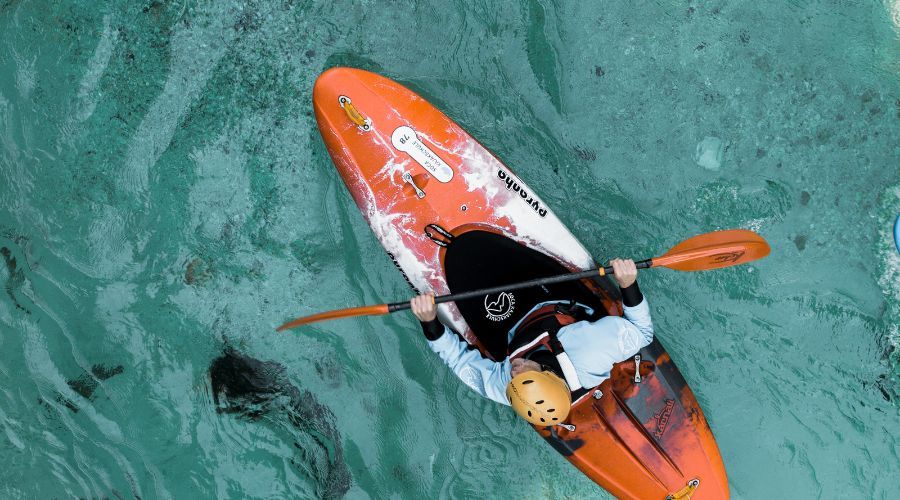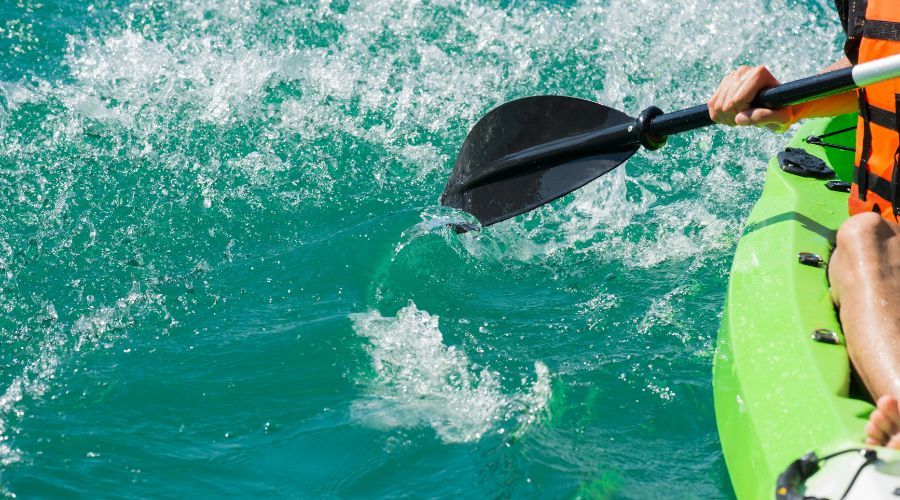
People need knowledge, advanced kayak skills, and practice to kayak in waters. By paddling, they aim to engage in advanced kayak propulsion with minimum effort while maintaining stability and control. People could find themselves fighting against discomfort and tiredness if they do not utilize the proper kayak paddle techniques. First, the correct body posture is crucial to employ the appropriate kayak paddling technique. People need to sit upright by firmly keeping their feet on the footrests. They must slightly bend their feet and firmly lower their back against the seatback. By doing this, people would keep their balance and evenly distribute their weight. This blog discusses the details of the kayak paddling technique, including stroke techniques, paddle grip, and appropriate body position to let people enjoy kayaking in the water.
If people are looking to enjoy an exciting water adventure, they should try kayaking. But before they start kayaking, they should learn the appropriate technique to ensure a practical and comfortable paddling experience.
Employing the four basic advanced kayak stroke techniques can help them become good kayakers. They are draw, sweep, reverse, and forward strokes. And they would also need to learn the bracing and J-stroke. Besides making padding simpler and more effective, it helps decrease injury and fatigue risks.
Firstly, people must ensure that they are comfortably sitting in their kayaks. An excellent body posture is essential. Thus, they must keep their back straight and slightly bend their legs to maintain stability and balance. Engaging their core muscles would also help them engage in advanced kayak control. As far as gripping and hand position are concerned, appropriate paddle gripping is necessary to let people successfully kayak. People must ensure their hands are in the paddle’s correct position, with the blade facing away and down from them. They must keep their hands relaxed and straighten their arms to avoid strain.
When people are about to start kayaking, they must remember that their sitting option is essential to their paddling experience. They should slightly bend their knees and point outward to give them the most control over their kayak. They must tuck in their elbows and arms to maintain an excellent body posture and involve their core muscles to keep themselves balanced.
Whether people are newbies or experienced kayakers, mastering kayak padding strokes could let them make a tremendous difference in their kayaking experience. This blog section discusses the three modern kayak stroke techniques that all kayakers must understand and know.

Nothing is like a classic forward stroke. It is like the kayaking’s bread and butter. And all kayakers must master this technique. Hand placement and correct posture are essential for a successful forward stroke. Kayakers should push the paddle down by using their wrists and hands. They must keep their elbows near their body. They must twist their torso to produce energy to move effectively and efficiently through the water.
Suppose the kayakers need to move back or slow down. Then they need to employ the reverse stroke. Like the forward stroke, the reverse stroke needs appropriate hand placement and body posture. Kayakers must extend their arms straight and use their wrists and hands to apply pressure to the paddle. The essential difference is that kayakers would pull the blade towards their hips rather than push it away.
Turning your kayak could be challenging. Using the sweep stroke, kayakers could easily navigate the tight corners. They must push the blade away from their kayak and pull it back in the travel’s opposite direction to perform the sweep stroke. Kayakers must ensure that their elbows are near their bodies, their arms are straight, and their wrists and hands are on the paddle. It would let them smoothly turn their kayaks.
The bracing is a powerful kayaking move carried out by using the paddle to press against the kayak’s sides and water. It performs a key role in stabilizing the kayak and ensures that it does not flip or capsize. Kayakers carry out this stroke by strongly gripping on the paddle with their upper hands and pressing their kayak’s paddle against the water with their lower hands. This offers both energy and stability, permitting the kayakers to push their kayaks forward. Bracing is significant in rough waters, where strong currents and waves can make kayaks unstable. Kayakers must know bracing as it is essential to have a safe and entertaining kayaking experience. Before kayaking in rough waters, gaining confidence and practicing the bracing stroke is essential. Besides bracing with the kayak paddles, kayakers can also employ their bodies to brace themselves. This could include leaning into the kayak’s side or using the paddle blade to press against their shoulders or hips. Kayakers need to keep themselves aware of their body positions and employ the body and paddle in tandem to stay in control and upright.

The most common method which kayakers can employ to maneuver and turn their kayaks is with paddling strokes. To turn their kayaks, they would need to employ backward and forward strokes with their paddle to direct their kayaks in the wanted direction. When kayakers have to turn to the right, they should utilize a forward stroke on the boat’s left side and a backward stroke on its right side and vice versa to turn to the left.
Sculling is a kayaking method that permits kayakers to produce more energy and speed. In order to utilize it, kayakers need to vertically hold the paddle blade and scull their arms from one side to another. By keeping their arms near their bodies and utilizing them to produce energy, kayakers can move and control their kayak more accurately. Usually, very experienced kayakers employ this technique because they know the sculling stroke’s power. To perform the sculling stroke properly, kayakers will require coordination and strength. They also need to sit comfortably where their arms can freely move so they are more effective. After mastering this kayaking technique, the kayaker would have more speed and control.